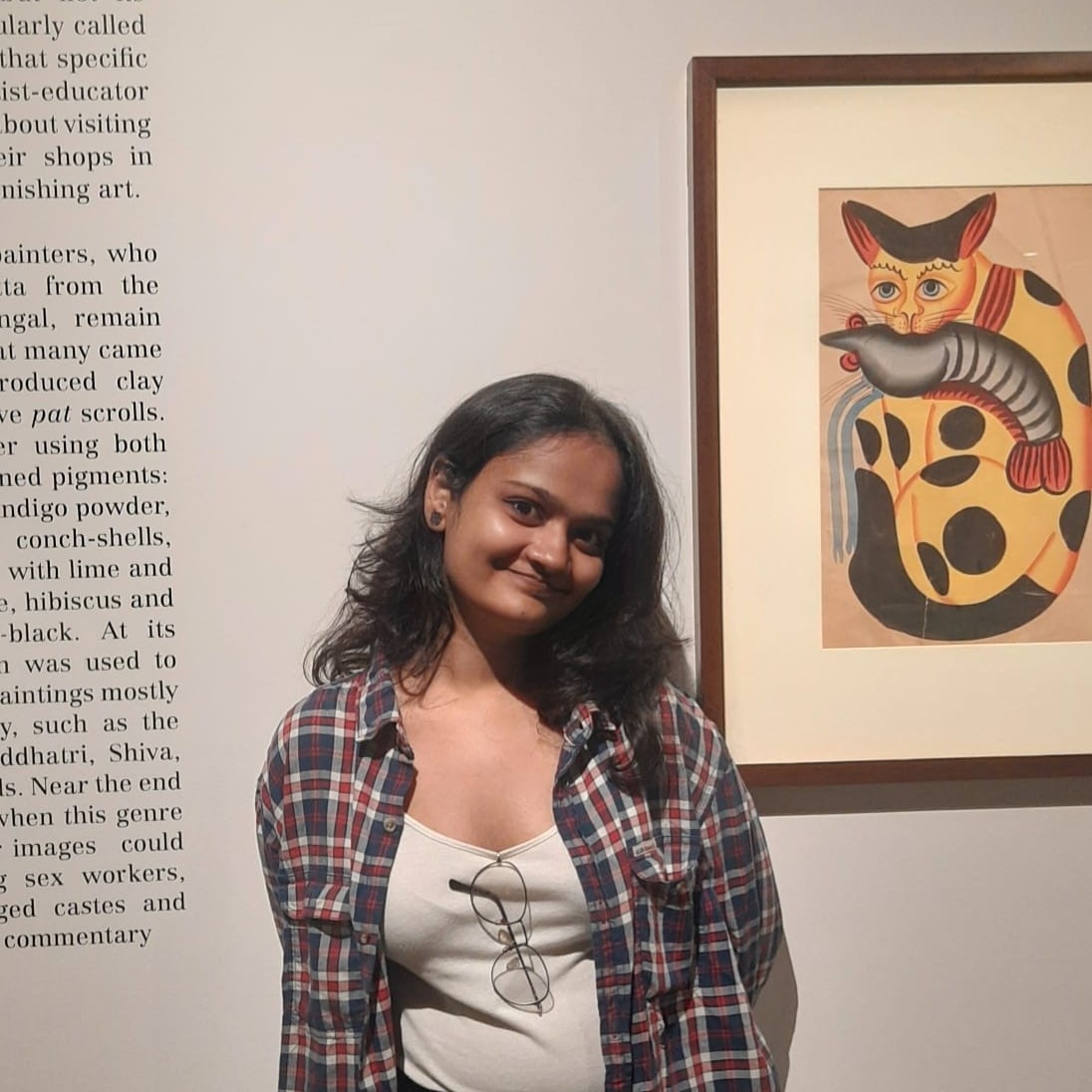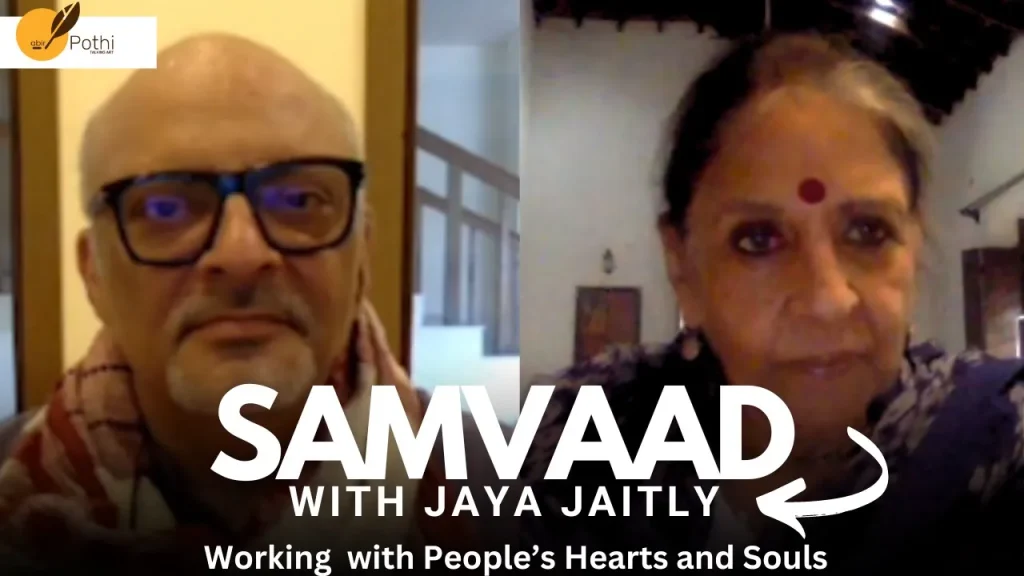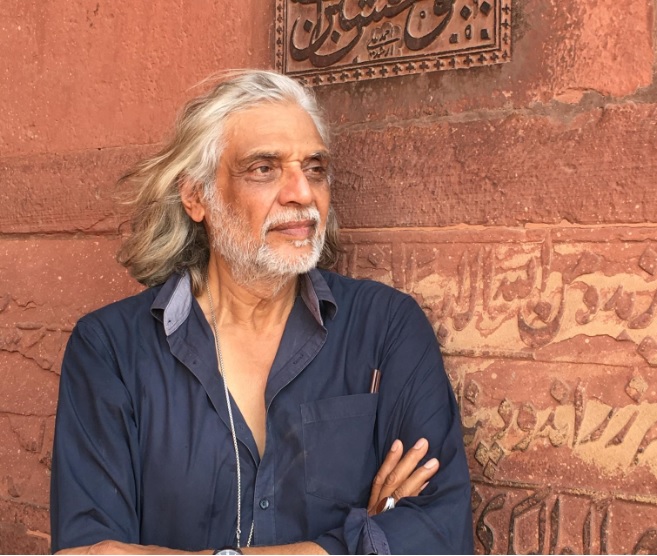Welcome to Samvaad, where art meets conversation, and inspiration knows no bounds. Here we engage in insightful conversations with eminent personalities from the art fraternity. Through Samvaad, Abir Pothi aims to create a platform for thought-provoking discussions, providing readers with an exclusive glimpse into the creative processes, inspirations, and experiences of these creative individuals. From curating groundbreaking exhibitions to pushing the boundaries of artistic expression, our interviews shed light on the diverse perspectives and contributions of these art luminaries. Samvaad is your ticket to connect with the visionaries who breathe life into the art world, offering unique insights and behind-the-scenes glimpses into their fascinating journeys.
This is Part 4 of the Samvaad is between Nidheesh Tyagi from Abir and Jaya Jaitly who is best known for her contributions to the promotion and preservation of Indian handicrafts and textiles. Jaitly has played a significant role in the development of the Indian handicraft sector and has been an advocate for the rights and welfare of artisans. She has been actively involved in various organisations working towards the empowerment of artisans and the promotion of traditional crafts. Jaya Jaitly has also written extensively on Indian crafts, culture, and social issues.
Nidheesh: Being a woman yourself, how do you see this whole gendered diminution of crafts. When we see otherwise the world is so male-dominated. The whole of crafts is so much about dominated and there is the preeminent presence of women in them. How does that play out for crafts and for them, as women who are craftspeople.
Jaya: Alone women can’t do it. But wherever women are being formed into cooperative societies, some Sangathan of some kind working under an NGO, they are really doing well. Sometimes one of them will end up forming their own NGO and guiding other women. There will be one bold woman in the village who will say, “I’ll do it for you”. So we have many many examples like that. They now go out, they do their own marketing. They can talk to any customer.
I think their influence on men is also very interesting. The very traditional formal UP, musalmaan (Muslim) weaver who sent his son out for one of our bazaars, he will model a saari just like the woman who is selling a saree because he has to compete. So he’ll wear the plates and do the thing and I love taking pictures of them because they have the daadhi (beard), chashma (spects) and then they’re wearing a saaree. So there is a small seepage. I think if we look at everything like a social science theory or a thing that’s a problem then it doesn’t work. But you give people opportunity and let things flow in a human way. At least that’s the way I help make it work. I dont tell anyone “mahilaaon ko yeh karo” (to women “do this”). People have always said, “what do you do about working with women?” I don’t go and search out women to work with. As an old socialist, I would say that we are not feminists. We are- socialism means you are equal in everything with everybody. Feminism is just a part of socialism, I don’t have to break this down separately.
Nidheesh: But at the same time, when you consider, how things have grown organically. Of course, you don’t have to make any special effort for it but then you can see that when they got opportunities how it worked for them.
Jaya: Well, yes not only in craft just the fact of creating self-help group has helped a lot. In the south the self-help groups work very well among vegetable vendors or silai women who will have a machine and who take orders to make petticoats and blouses for their communities and locality, they want to work. Everywhere I go, they say “hume kuch kaam karna hai. Kaam do.” (we want to work. Give us work.) So they want to and they feel when they earn, they get something out of it and very backward tribal women. even from tamil nadu, today they have a very nice NGO which was set up by a lady doctor in a place called Porgai. And the lady doctor used to look after their health and found they have craft skills. And they say that “Give us a bank account, put the money directly in there. If you give us cash, then our husbands take it away when we go home.” so you learn a lot about the local culture, patriarchy, how it works, how they try to avoid. In the old days in Gujarat, all the women did the embroidery, but the men used to come with the embroidery to show us. When I was with the Gujarat government, I used to tell them I won’t talk to the man, because I cannot explain to them what thread and what dhaaga design to use. You have to bring your woman.
So one old-ish man came in one day and said, “ek lakh rupaya bhi dedo I will not bring in my wife.” (I will not bring my life even if you give me One lakh rupees) I said, “Then you go home and sit I’m not giving your family any work”. So after he thought it over and he saw other women come for work having bank accounts, he brought his wife. And then I released his wife was about half his age and very beautiful so he didn’t want to show her off. So earlier she used to work behind him cover their face, carry the baby, carry the bundle, and he would come and do the talking. After sometime she came ahead, did the talking and he carried the bundle and the baby. So it was a lovely little silent revolution. So these things happen without too much push. Little examples. A little nudge here and there. You can’t expect to change their lives overnight.
Nidheesh: I think you should write all these stories in one place, even these are great stories telling about these people’s journey and their emancipation. One question I wanted to ask Jaya ji is that there are lots of young artists who are part of our Abir initiative and how do we bring these artists closer to crafts and do something together which can firmly- when we have an artistic expression through craftspeople, get these exchanges and shared spaces. What do you think about that and how do you think it can work out?
Jaya: Well lots of young people have come to me and asked “How do we work with crafts?”. So I tell them “I don’t hold classes and I don’t have space in my office for interns because I can’t spend my life teaching when I’m having to do other work. So when we have our 3-4 bazaars in a year, at least a minimum of 100 craftspeople in different crafts skills, levels, nature and understanding- so come there, you can volunteer there. Talk to each of them, and get yourself educated by them. Learn about their homes and their families and you arrange to go and stay with them if you like”. Its like an open university. For that short time, I even say go around collecting their sales figure every day. See how much they sell. Why are they selling less or more? And sometimes they will tell you something like, “bagal waalon ne bohot becha hai aapko kam bata rahe hain.” ( the people beside us have sold a lot. They are telling you less than what they have earned) So all these little things about human nature, about aspects of marketing, all these things you will learn not by me sitting and lecturing but you’re being right there in the midst of it and making it a human exercise. That is my main advice to everybody. Where it may be, go to a village ‘go to Delhi haat which is all full of traders now, so I don’t advise it as much. But any one of our bazaars or even dastakar or crafts council of India, have nice bazaars’. Any craft bazaar, go spend a whole week there going all day, talking to each person. I get young people who come and just sketch the karigars all day, then at the end I say, “You make a nice sketchbook I will publish it”. So you know how you introduce each person, and encourage them to follow their talent but “judo”(unite) with craft.
Nidheesh: and how do you see art currently, the way Indian art is right now? And you’ve been part of this initiative.
Jaya: Indian art has always had this horrible division which I dislike, that contemporary art is supposed to be anything you feel like, all abstract and you put huge amounts of money on it and you swank around in galleries. I don’t subscribe to it very much. Fine, they made their life there is a world lying open for them but I’ve always had this problem that crafts people feel very sad that, “gallery waalon ko 2 crore milega ek kaam ke liye (People at the gallery will get upto 2 crores for their work) but we will only get 2k for the piece that is taken and probably not as much.” and I had potters tell me that customers come and they say, “why are you charging so much for this very big pot afterall it is only “mitti” (clay) and they say. “But you pay so much for a painting after all its only canvas. its kapda (cloth)”. Then i have tried a lot and there have been many exercises even by others to make craftspeople and traditional artists and contemporary artist sit together, and make them discuss. Let the contemporary artist answer why the craftsperson, the traditional artist gets less for his work.
Nidheesh: what is the process? Why is this divided in our own mind?
Jaya: Elitism. The power of the rich that is there in every field everywhere. If you’re poor nobody pays attention to you. If you’re very rich you might be utter rubbish but people will bow before you. So it’s like that. You make a name for yourself in a certain kind of society you speak a certain person’s language, but if you are a little shy and soft-spoken and you’re only like a desi, even a bank manager does not listen so much to a person wearing dhoti-turban as he would to a person wearing a suit. We have it within us. Every society has it.
Nidheesh: and where do you get your hope now, ’cause you’ve done so much and there’s a- so what gives you hope for this community?
Jaya: Hope is the immense potential in crafts. The potential of craftspeople to adapt to new ideas, to express themselves more confidently, to find more and more avenues opening up. Like I’m sitting in Goa pretty much on my own. There are so many crafts here which have almost died out which have lovely cultural stories and I just made a part of a group of 5-6 women, one writer, one artist, one potter, and one person working with weavers and We are going to go exploring everywhere then have ideas of how do we improve that craft, how do we suit it better to the tourism in goa which is like booming. And then get the govt to fund the design development projects. Then also build a very charming Goa-Haat, for which I’m working on a design with some architects.
Nidheesh: Brilliant.
Jaya: and then have these people come to a Goa-haat. So we try and create something contemporary for the rest of the world, but bringing in lots of culture of Goa, so everywhere I go I find something to do.

Vaishnavi Srivastava is a learning writer, a keen researcher and a literature enthusiast. She is a Sub-editor at Abir Pothi.





